Home>Interior Design>Decorating With Art: 13 Ways To Arrange Artwork
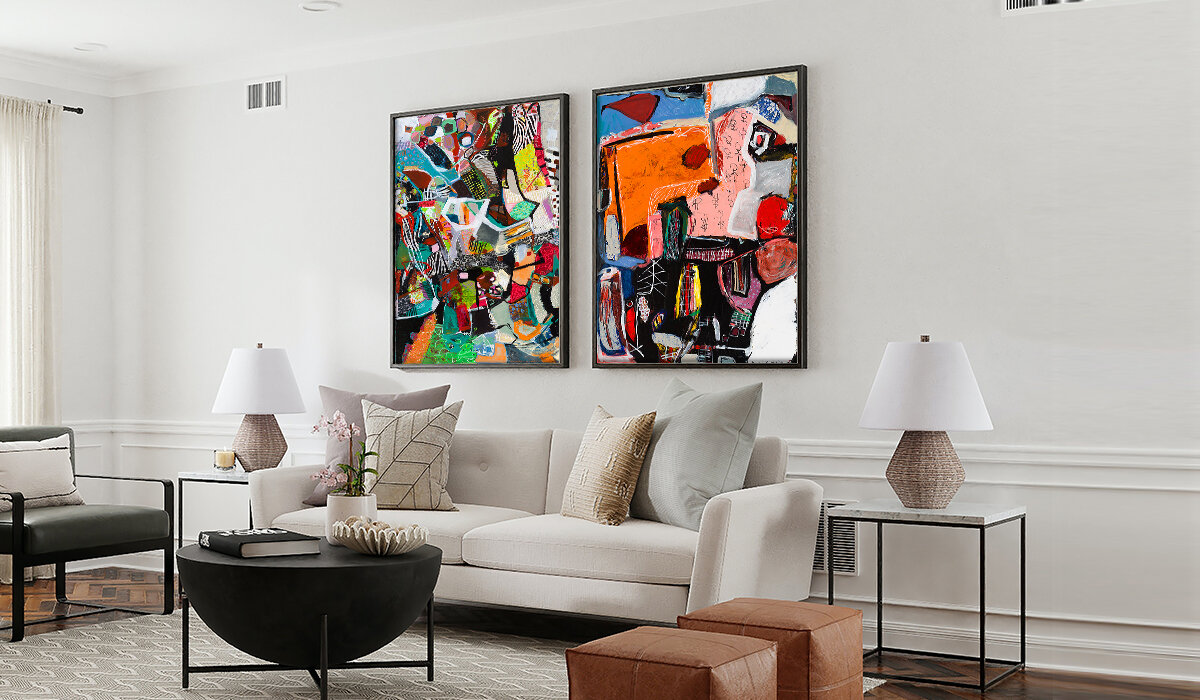

Interior Design
Decorating With Art: 13 Ways To Arrange Artwork
Modified: March 21, 2024
Learn how to enhance your interior design with artwork. Discover 13 creative ways to arrange and display art in your home for a stunning and personalized touch.
(Many of the links in this article redirect to a specific reviewed product. Your purchase of these products through affiliate links helps to generate commission for Storables.com, at no extra cost. Learn more)
Introduction
Decorating with art is a powerful way to transform your living space and create a personal and inviting atmosphere. Artwork adds color, texture, and personality to a room, making it visually appealing and reflective of your unique style. Whether you are a seasoned art enthusiast or just beginning to explore the world of art, incorporating artwork into your interior design can elevate the overall aesthetic and ambiance of your home.
In this article, we will explore thirteen creative ways to arrange artwork in your space. From creating a statement wall with a gallery display to using art in unexpected spaces, we will delve into various techniques that will help you showcase your art collection while adding a touch of sophistication to your home. Whether you have a collection of original paintings, prints, or photographs, these tips and ideas will guide you in creating a visually stunning and harmonious display.
But before we dive into arranging artwork, it’s important to understand the power of art and why incorporating it into your interior design is so impactful. Art has the ability to evoke emotions, provoke thought, and spark conversation. It adds a layer of depth and meaning to a room, making it more than just a functional space. By carefully selecting and arranging artwork, you can create a visual story that reflects your interests, passions, and personality.
When selecting artwork for your space, consider your personal taste, the style and color scheme of your interior, and the mood you want to create. Choose pieces that resonate with you and make you feel inspired. Don’t be afraid to mix and match different styles, mediums, and sizes to add visual interest and create a unique display. Remember, the goal is to create a cohesive and visually appealing arrangement that enhances the overall aesthetic of your home.
Now that we have explored the importance of art and the factors to consider when selecting artwork, let’s dive into the various ways you can arrange artwork to create stunning displays in your home. From creating focal points to playing with symmetry and balance, these techniques will help you showcase your art collection in the most captivating and stylish manner.
Key Takeaways:
- Elevate your home decor by incorporating artwork in unconventional spaces, rotating displays, and mixing different art styles. Let your creativity shine and infuse your space with beauty and personality.
- Embrace the power of art to transform your living space, evoke emotions, and create a visually stunning and harmonious display. Trust your instincts, rotate your artwork, and let your home reflect your unique style and personality.
Read more: How To Store Artwork
The Power of Art: Why Decorate with Artwork
Art has a profound impact on our emotions and can transform the atmosphere of a space. By incorporating artwork into your interior design, you are not only adding visual interest but also creating a meaningful and personalized environment. Here are some reasons why you should consider decorating with artwork:
Expression of Personal Style: Artwork allows you to showcase your personal taste and style. Whether you prefer bold and vibrant pieces or more subtle and abstract artwork, your choices reflect your unique personality and create a space that is truly your own.
Enhancement of Visual Appeal: Artwork adds color, texture, and depth to a room, making it visually intriguing. Whether you choose large statement pieces or a collection of smaller artworks, they can act as focal points and draw the eye, creating visual interest and adding a touch of sophistication to your space.
Creation of Emotional Connection: Artwork has the power to evoke emotions and create a deep connection with the viewer. Each piece tells a story or conveys a message, allowing you to engage with the art on a personal level. By surrounding yourself with artwork that resonates with you, you can create a space that sparks joy, inspiration, and serenity.
Conversation Starter: Artwork can be a great conversation starter when you have guests over. It offers a point of interest and can ignite discussions about the artist, the meaning behind the piece, or even personal interpretations. It adds a dynamic element to your space and encourages dialogue and connection.
Transformation of Space: Artwork has the ability to completely transform the atmosphere of a room. Whether you are looking to create a calming oasis, an energetic and vibrant space, or a cozy and intimate ambiance, choosing the right artwork can set the tone and create the desired mood.
Support for Artists: By decorating with art, you are not only enhancing your own space but also supporting artists and their work. Investing in original pieces or supporting local artists allows you to contribute to the creative community and promote the value of art.
When decorating with artwork, it’s important to consider factors such as the style, size, and placement of the pieces. The artwork should complement the overall design of the space and harmonize with other elements such as furniture, lighting, and color schemes. Don’t be afraid to experiment and find creative ways to display your art to maximize its impact on the room.
By embracing the power of art and incorporating it into your interior design, you can create a space that is not only visually stunning but also deeply meaningful and reflective of your personality. Whether you are a seasoned art collector or just starting your collection, let your imagination guide you and allow your artwork to tell your unique story.
Finding the Perfect Art Pieces: Tips for Selecting Artwork
The process of selecting artwork for your home can be an exciting and personal journey. With so many options available, it’s important to consider a few key factors to find the perfect pieces that will complement your space and resonate with you. Here are some tips to keep in mind when selecting artwork:
Define Your Style: Before beginning your search for artwork, take some time to define your personal style and the aesthetic you want to achieve in your space. Are you drawn to abstract, contemporary, or traditional pieces? Do you prefer vibrant colors or a more muted palette? Understanding your preferences will help you narrow down your options and make more informed choices.
Consider the Space: Take into account the size, layout, and existing décor of the room where you plan to display the artwork. If you have a large, empty wall, a bold statement piece might be a great choice. On the other hand, if the space is more intimate, you might opt for a collection of smaller artworks or a subtle, understated piece. Additionally, consider the color scheme and style of your existing furniture and décor to ensure that the artwork complements the overall design.
Set a Budget: Determine your budget for purchasing artwork. Original pieces can vary widely in price, so it’s important to have a clear idea of what you’re comfortable spending. Remember that art doesn’t have to break the bank – there are many affordable options available, including prints, photographs, and even local artist creations.
Explore Different Mediums: Artwork comes in various mediums such as paintings, prints, photography, sculptures, and mixed media. Don’t limit yourself to only one type of medium – explore different options and see what resonates with you. Each medium has its unique qualities, and experimenting with different mediums can add variety and texture to your art collection.
Attend Art Exhibitions and Galleries: Visit local art exhibitions, galleries, and art fairs to discover emerging artists and explore a wide range of styles and techniques. Engaging with art in person allows you to appreciate the texture, colors, and details of the artwork, giving you a better sense of its impact in your space. Additionally, attending art events can support local artists and contribute to the art community in your area.
Connect with the Art: When selecting artwork, trust your instincts and choose pieces that speak to you on a personal level. Consider the emotions or thoughts that the artwork evokes – does it inspire you, bring you joy, or provoke curiosity? Your connection with the art is what will make it truly special and meaningful in your home.
Consider Size and Proportion: The size of the artwork is crucial in creating a visually balanced display. Think about the dimensions of the wall and the overall layout of the room. A large wall might require a statement piece, a gallery wall, or multiple artworks arranged together. On the other hand, a smaller wall might be best suited for a single, smaller piece or a carefully curated arrangement of smaller artworks.
Trust Your Intuition: Ultimately, the art you choose should make you happy and resonate with your personal style. Don’t be swayed by trends or the opinions of others. Trust your intuition and select artwork that you truly love and that brings a sense of joy and inspiration to your space.
Remember, selecting artwork is a deeply personal and subjective process. Embrace the journey and enjoy exploring different styles, mediums, and artists. By following these tips, you are sure to find the perfect art pieces that will add beauty and personality to your home and reflect your unique style and taste.
Statement Wall: Creating a Focal Point with a Gallery Wall
A statement wall, also known as a gallery wall, can instantly transform a room and serve as a captivating focal point. It allows you to display multiple artworks in a visually cohesive and impactful way. Here are some tips to create a stunning gallery wall:
Choose a Theme: To create a cohesive and visually pleasing gallery wall, start by choosing a theme or a common thread that ties the artworks together. This can be a specific style, color palette, subject matter, or even a mix of various styles that complement each other. Having a theme will help you maintain visual harmony and create a curated display.
Plan the Layout: Before hanging your artworks, plan the layout on the wall. Lay the pieces on the floor and experiment with different arrangements until you are satisfied with the overall composition. Consider the spacing between the artworks and how they relate to one another. Don’t be afraid to mix different sizes and orientations for added visual interest.
Use Consistent Frames: To create a cohesive look, consider using consistent frames for your gallery wall. This doesn’t mean all the frames have to be identical – you can choose frames in the same color or style to tie the artworks together. Alternatively, you can opt for a mix of frames that complement each other while maintaining a cohesive aesthetic.
Play with Shapes and Sizes: Incorporate a variety of shapes and sizes to add visual interest to your gallery wall. Mix larger statement pieces with smaller artworks and experiment with different shapes such as rectangles, squares, circles, or even irregular shapes. This dynamic mix will create a visually captivating display.
Consider Wall Color: Take into account the color of your walls when planning your gallery wall. If you have a bold or busy wall color, consider using a muted color palette or choose artwork that complements the wall color. On the other hand, if you have neutral walls, you can be more adventurous with your artwork choices and color scheme.
Experiment with Arrangements: Don’t be afraid to think outside the box and create unconventional arrangements for your gallery wall. Instead of aligning all the artworks in a straight line, consider creating a more organic or asymmetrical arrangement. You can even extend the display beyond the wall and incorporate adjacent areas such as corners or staircases.
Add Personal Touches: In addition to artwork, consider adding personal touches to your gallery wall. You can incorporate framed photographs, travel mementos, or sentimental items that hold special meaning to you. This will not only enrich the display but also make it more personal and reflective of your life and experiences.
Use Proper Hanging Techniques: Ensure that you use appropriate hanging techniques to securely display your artworks. Use picture hooks or nails that can support the weight of the frames and ensure that they are level. You can also use adhesive hooks or gallery-style hanging systems for a more streamlined and versatile approach.
Regularly Update and Refresh: A gallery wall gives you the opportunity to regularly update and refresh your display. Feel free to rotate the artworks or add new pieces to keep the display dynamic and fresh. This allows you to showcase different styles and artists, and it keeps the display engaging and ever-evolving.
A gallery wall is a striking way to showcase your art collection and create a focal point in your space. By following these tips, you can create a visually stunning and personalized display that not only adds beauty to your home but also reflects your unique style and taste.
Symmetry and Balance: Arranging Artwork in Pairs
Arranging artwork in pairs is a classic technique that brings a sense of symmetry and balance to your space. Placing two pieces of art side by side can create a visually pleasing and harmonious display. Here are some tips on how to arrange artwork in pairs:
Choose Complementary Pieces: When selecting artwork for a paired arrangement, choose pieces that complement each other in terms of style, color, or subject matter. Look for artworks that share a common theme or visual elements that make them visually cohesive when displayed together.
Consider Frame Consistency: For a more unified look, consider using consistent frames for the paired artworks. This doesn’t mean they have to be identical frames, but selecting frames with similar colors or styles can create a cohesive and balanced arrangement.
Experiment with Size and Scale: Pairing artworks of different sizes can create visual interest and add depth to your display. Place a larger piece on one side and a smaller piece on the other to create a visually balanced composition. Alternatively, you can pair two artworks of similar sizes for a symmetrical look.
Placement: When arranging artwork in pairs, you have several placement options. You can choose to hang the pieces side by side, ensuring that they are evenly spaced from each other. Alternatively, you can stack the artworks vertically, with one above the other. This style works particularly well for narrow walls or spaces where horizontal placement is not practical.
Balance with Other Elements: When arranging artwork in pairs, consider the balance of other elements in the room. Ensure that the size and scale of the paired artworks complement the furniture or architectural features of the space. For example, if you have a large sofa, you can hang two equally sized pieces of art on either side to create a balanced composition.
Using Mirrors: Incorporating mirrors as part of a paired arrangement can add an extra layer of symmetry and reflection to your space. Place a mirror on one side and a piece of art on the other to create visual balance while adding depth and light to the room.
Creating a Gallery Effect: To enhance the impact of a paired arrangement, consider creating a gallery effect by adding additional artworks or decorative elements around the pair. This can be achieved by incorporating smaller complementary pieces, wall sconces, or decorative objects to frame the main duo and create a more expansive and visually captivating display.
Hanging Technique: When hanging paired artwork, ensure that they are level and evenly spaced. Use a measuring tape or a level to align the artworks accurately. Consider using picture hooks or adhesive hanging systems that provide stability and support for the frames.
Placement Context: The placement of paired artwork can vary depending on the context of the room. In a living room, they could be hung above a fireplace, flanking a TV, or on either side of a window. In a bedroom, you can hang them above nightstands or above the headboard. Play around with different placement options to find the arrangement that works best for your space.
A pairing arrangement is a simple yet effective way to create balance and visual harmony in your space. By following these tips, you’ll be able to showcase your artworks in an elegant and symmetrical manner, adding a touch of sophistication to your home’s interior design.
Read more: How To Arrange Wall Art
Storytelling with Art: Creating a Narrative Display
Art has the ability to tell stories and evoke emotions. Creating a narrative display with artwork allows you to curate a visual story that adds depth and meaning to your space. Here are some tips on how to create a narrative display using art:
Define the Story: Start by deciding on the theme or story you want to convey through your artwork. It could be a personal journey, a favorite travel destination, or a specific emotion or concept. Having a clear idea of the story you want to tell will guide your artwork selection and arrangement.
Choose Artwork with Narrative Elements: Look for artworks that have narrative elements or tell a story through their imagery. This could include pieces that depict actions or movements, evoke a specific mood, or portray characters or symbols that elicit emotions or memories. Select artworks that resonate with your chosen story and can communicate its essence to viewers.
Curate a Cohesive Collection: Collect a variety of artworks that together build a narrative and create a cohesive collection. This can include different mediums, styles, or artists that share a common thread or complement each other visually. Consider how each piece contributes to the overall story and the connection between them.
Consider Placement and Flow: Arrange the artworks in a way that creates a flow and guides viewers through the narrative. Start with an attention-grabbing piece that sets the tone for the story and then arrange the other pieces in a sequence that builds upon the previous one. Consider the visual balance and rhythm of the display to create a smooth and engaging progression.
Add Supporting Elements: Enhance the narrative display by adding supporting elements that help to further convey the story. These elements can include captions or descriptions that provide context for each artwork, additional objects or elements that complement the theme, or even lighting techniques that enhance certain aspects of the display. These supporting elements add depth and enrich the storytelling experience.
Create Interpretive Spaces: Designate specific areas within the display where viewers can pause and reflect on the story being told. These interpretive spaces can be created by grouping related artworks together or adding seating or meditation areas. By giving viewers a chance to engage with the narrative on a deeper level, you enhance their experience and connection to the art.
Engage Viewers with Prompts: Encourage viewers to actively engage with the narrative display by providing prompts or questions that spark their imagination and invite them to reflect on their own experiences or interpretations of the story being told. This interactive approach adds an additional layer of engagement and allows for a more personal connection with the artwork.
Regularly Refresh the Display: Keep the narrative display dynamic by regularly refreshing the artwork or adding new pieces to the collection. This allows you to continue building on the story and introducing new narratives over time. Changing the display periodically also keeps it fresh and interesting for returning viewers.
Creating a narrative display with artwork is a powerful way to engage viewers and create a meaningful experience within your space. By carefully curating a collection of artworks that tell a story and arranging them in a thoughtful and cohesive manner, you can transport viewers into a world of imagination and emotion.
Mixing and Matching: Combining Different Art Styles
Combining different art styles in your home decor can create a visually dynamic and eclectic atmosphere. Mixing and matching artworks from various styles is an opportunity to showcase your personal taste and create a unique and captivating display. Here are some tips on how to combine different art styles:
Identify the Core Style: Start by identifying a core art style or theme that will serve as the foundation for your display. This could be a particular art movement, such as impressionism, abstract expressionism, or minimalism. Choosing a core style will provide a cohesive element that ties your diverse artworks together.
Consider Color, Composition, and Technique: Look for commonalities in color schemes, composition, or artistic techniques among the artworks you want to combine. This can be in the use of specific colors, a similar approach to composition, or the application of a particular artistic technique. These common elements will help create visual harmony and cohesion within the display.
Create Contrast: To add interest and showcase the individuality of each artwork, create contrast within the display. Combine artworks with different styles, mediums, or color palettes to create a visually captivating composition. The contrast between different art styles can create a sense of tension and excitement in the overall display.
Establish Visual Hierarchy: Arrange the artworks in a way that establishes a visual hierarchy and guides the viewer’s eye. Consider the scale, placement, and spacing of each piece to create a balanced composition. A bold and eye-catching artwork can serve as the focal point, with other pieces supporting it in a visually appealing arrangement.
Use Neutral Walls or Backgrounds: To allow the diverse art styles to shine, consider using neutral walls or backgrounds to display your artwork. Light gray, white, or beige walls provide a clean and unobtrusive backdrop that allows the artworks to take center stage.
Continuity with Frames: Choose frame styles that can harmonize the different art styles. Opt for frames that are simple and understated to create continuity and avoid overwhelming the individual artworks. Black or white frames are versatile choices that can complement various art styles and create a cohesive look.
Experiment with Placement: Don’t be afraid to experiment with the placement of different art styles. Consider creating visually interesting arrangements such as a salon-style display with artworks clustered together, or a more intentionally curated arrangement with different styles placed strategically throughout the space. Play around with the arrangement until you achieve a composition that is visually engaging and aesthetically pleasing.
Trust Your Instincts: When combining different art styles, trust your instincts and choose artworks that resonate with you personally. Art is subjective, and there are no set rules when it comes to creating your own unique display. Follow your intuition and select pieces that bring you joy and inspiration.
By mixing and matching different art styles, you can create a visually stimulating and eclectic display that reflects your individuality and personal taste. Embrace the diversity of art and let your creative instincts guide you in creating a captivating and harmonious arrangement.
Size Matters: Scaling Artwork to Your Space
When it comes to incorporating artwork into your space, size matters. Scaling artwork correctly ensures that it fits harmoniously within the dimensions of your room and creates a visual balance. Here are some tips for scaling artwork to your space:
Consider the Wall Size: The size of your wall will determine the scale of the artwork you choose. For larger walls, consider opting for a larger statement piece or a gallery-style display with multiple artworks. Smaller walls may call for smaller or medium-sized pieces to avoid overwhelming the space.
Create Visual Balance: To create visual balance, consider the size of your furniture and other decorative objects in the room. The artwork should complement the scale of the surrounding elements. For example, if you have a large sofa, a larger-sized artwork above it can create a visually harmonious composition.
Measure Your Space: Before purchasing artwork, measure the wall space where you intend to display it. Take accurate measurements both horizontally and vertically. This will help you determine the appropriate size range for the artwork and ensure it fits properly within your space.
Consider Room Proportions: Take into account the proportions of the room itself when selecting artwork. If you have high ceilings, consider incorporating taller or vertically oriented pieces to fill the vertical space. In rooms with lower ceilings, consider wider or horizontally oriented artworks. This will help create a balanced composition and fill the available space effectively.
Groupings and Combinations: If you have a large wall or an expansive space, consider grouping multiple artworks together to create a visually striking arrangement. This can be done with artworks of varying sizes or by combining different mediums or styles. Play with different groupings to find the combination that best suits your space.
Use Matting and Framing: Matting and framing can help control the perceived size of the artwork. Using larger mats or frames can increase the overall size of the piece while using smaller frames can make the artwork appear more compact. Consider the effect you want to achieve and choose matting and framing options accordingly.
Create Depth with Layering: Layering artwork can add depth and visual interest to your space. Consider placing smaller artworks in front of larger ones to create a sense of dimension. This technique works particularly well with abstract or textured pieces that add depth and create a visually engaging composition.
Consider the Viewing Distance: Think about the distance from which the artwork will be viewed. For example, in a dining room where people will be seated, consider placing the artwork at eye level. In a hallway or entryway, where the viewing distance might be closer, opt for smaller or medium-sized artworks that can be appreciated up close.
Trust Your Eye: While there are guidelines for scaling artwork, ultimately, trust your eye and the feeling you get when you see an artwork in your space. Keep in mind that art is subjective, and there are no strict rules. If a piece speaks to you and you feel it resonates with your space, go with your intuition.
By scaling artwork appropriately, you can create a visually balanced and harmonious display that enhances the overall aesthetic of your space. Consider the size of your walls and furniture, measure your space accurately, and experiment with groupings and combinations to find the perfect fit. Remember, the goal is to create a composition that feels cohesive, visually pleasing, and reflective of your personal style.
When arranging artwork, consider the scale of the wall and the size of the pieces. Larger walls can accommodate a gallery wall, while smaller walls may be better suited for a single statement piece.
Color Coordination: Using Art to Complement Your Décor
Color coordination is a key aspect of interior design, and incorporating artwork that complements your décor can tie the entire room together and create a cohesive and visually appealing space. Here are some tips on how to use art to effectively coordinate colors in your décor:
Identify Your Color Palette: Start by identifying the color palette of your existing décor. Look at the colors of your walls, furniture, and accessories to determine the dominant hues in the room. This will serve as the foundation for selecting artwork that complements the overall color scheme.
Consider Analogous or Complementary Colors: Look for artwork that includes analogous or complementary colors to the dominant hues in your décor. Analogous colors are those that are adjacent to each other on the color wheel (e.g., blue and green), while complementary colors are those that are opposite each other on the color wheel (e.g., blue and orange). Artworks featuring these color schemes can enhance the visual harmony in the room.
Pop of Contrast: Alternatively, you can add a pop of contrast by selecting artwork that includes a color that is different from the dominant hues in your décor. This can create a focal point and add visual interest to the space. For example, if your décor is predominantly neutral, a vibrant, bold artwork can serve as a statement piece and bring a lively energy to the room.
Use Artwork as Color Inspiration: If you are starting with a blank canvas or revamping your existing décor, you can use artwork as a source of color inspiration. Find a piece of art that you love and use its color palette as a guide for selecting complementary hues for your walls, furniture, and accessories. This approach ensures that the artwork integrates seamlessly with the overall design of the space.
Create a Monochromatic Display: For a more subtle and harmonious look, consider creating a monochromatic display. Select artworks that primarily feature shades of a single color, such as various tones of blue or shades of gray. This creates a sophisticated and cohesive aesthetic that is visually soothing and elegant.
Balance Warm and Cool Tones: If your décor includes a mixture of warm and cool tones, strive for balance when selecting artwork. Warm tones, such as reds, oranges, and yellows, create a cozy and inviting atmosphere, while cool tones, such as blues and greens, evoke a sense of calm and tranquility. By incorporating artworks that include both warm and cool tones, you can achieve a visually balanced space.
Use Artwork to Introduce Accent Colors: If you want to introduce accent colors into your space, select artwork that features those specific hues. This can be a great way to add pops of color to a neutral-toned room or to complement existing accent colors in your décor. Use the artwork as a guide for selecting coordinating accessories, such as pillows or vases, to enhance the color scheme.
Placement and Distribution: Consider the placement and distribution of artwork within the room. Distribute artwork strategically to balance the colors throughout the space. For example, if you have a predominantly cool-toned room, consider placing a warm-toned artwork on an opposite wall to create visual balance.
Experiment and Trust Your Eye: While color coordination is important, it’s also essential to trust your eye and intuition when selecting artwork. Ultimately, the artwork should speak to you and evoke emotions. Use your personal taste as a guide, and don’t be afraid to experiment with different colors and combinations to create a unique and visually captivating display.
By using artwork to complement your décor through color coordination, you can create a harmonious and visually appealing space. Whether you choose to match, contrast, or introduce accent colors, let the colors in your artwork enhance the overall design and ambiance of your home.
Read more: How To Store Children’S Artwork
Unexpected Placement: Art in Unconventional Spaces
Art doesn’t have to be confined to traditional locations such as walls and mantels. Discover the creative possibilities by placing artwork in unconventional spaces throughout your home. This unexpected placement can add visual intrigue and a unique touch to your interior design. Here are some ideas for placing art in unconventional spaces:
Bookshelves and Display Cabinets: Incorporate artwork on the shelves of your bookcase or display cabinet. Lean or hang small pieces of art amidst books, collectibles, or other decorative objects. This unexpected placement draws attention to the artwork and creates an eclectic and visually captivating display.
Under Staircases: Maximize the use of space by hanging artwork under the stairs. This often overlooked area can become a focal point when adorned with a distinctive piece. Consider the size and shape of the space and choose artwork that complements the overall design of your home.
Within Nooks and Alcoves: Utilize the architectural features of your home by placing art within nooks, alcoves, or recessed spaces. Whether it’s a small painting, a sculpture, or a series of photographs, these areas provide intimate spaces where art can shine and become a focal point.
Vertical Surfaces: Look beyond traditional walls and consider placing art on vertical surfaces such as doors, room dividers, or even the sides of furniture. This unexpected placement adds an element of surprise and can transform an ordinary piece into a conversation starter.
Ceilings and Overhead Spaces: Make a bold statement by hanging artwork from the ceiling or displaying it in overhead spaces such as above a bed or dining area. This unique placement draws the eye upward and adds an unexpected visual element to the room. Consider artwork with interesting shapes, textures, or mobile-style pieces that can sway gently with air currents.
In the Bathroom: Add a touch of elegance and sophistication to your bathroom by incorporating art in this unexpected space. Consider hanging small paintings, prints, or framed photographs on the walls. Opt for waterproof or sealed pieces or protect the artworks with glass or plexiglass to withstand the humidity of the space.
Outdoor Spaces: Extend your love for art beyond the confines of your home by placing sculptures, garden art, or outdoor paintings in your garden, patio, or balcony. These unexpected placements add an artistic touch to your outdoor oasis and create a seamless transition between indoor and outdoor living areas.
In the Kitchen: Inject personality and style into your kitchen by incorporating art in this often overlooked space. Hang paintings or prints on empty walls or display small, framed pieces on open shelves. Consider themes that match the culinary ambiance, such as food or nature-inspired artwork.
In the Garage: Transform your garage or workshop into a creative space by adorning the walls with artwork. Hang large-scale paintings, photographs, or even vintage signage to infuse the space with character and inspiration. This unexpected placement adds a personal touch to an otherwise utilitarian space.
By placing art in unconventional spaces, you can inject personality and creativity throughout your home. Embrace unexpected placements and let your imagination be your guide. From bookshelves to ceilings, nooks to outdoor areas, there are endless possibilities to showcase your artwork and create a unique and visually engaging environment.
Layering Art: Creating Depth and Dimension
Layering art is a creative technique that adds depth, dimension, and visual interest to your home decor. By overlapping or placing art in a strategic manner, you can create unique compositions that bring a sense of richness and complexity to your space. Here are some ideas for layering art and creating depth and dimension:
Overlapping Artworks: Experiment with overlapping different artworks to create a visually dynamic display. This can be achieved by placing one piece in front of another, partially obscuring certain elements and revealing others. This technique adds depth and intrigue as viewers engage with the layered composition.
Using Multiple Frames: Incorporate multiple frames in a layered arrangement to enhance the sense of depth. Mix and match frames of different sizes, colors, and styles to create a visually engaging display. This overlapping of frames adds visual interest and creates a multidimensional effect.
Varying Sizes and Shapes: Combine artworks of different sizes and shapes to enhance the layered effect. Place a larger piece as the base layer and add smaller pieces on top or to the sides. This variation in size and shape creates visual texture and depth, drawing the eye to different focal points within the composition.
Texture and Mixed Media: Incorporate textured or three-dimensional art to create depth and visual contrast. Sculptures, ceramics, or works with raised or textured surfaces can add another layer of interest when placed in front of or alongside two-dimensional artworks. The interplay between different textures and materials creates a tactile and visually stimulating composition.
Wall Collage: Create a wall collage with a combination of framed art, photographs, drawings, and other decorative elements. Layer different sizes and styles of artworks, arranging them in an overlapping or staggered arrangement. This collage-style display adds visual depth and allows for a more personalized and eclectic presentation.
Using Mirrors: Incorporate mirrors into your layered art display. Hang a mirror behind or next to an artwork, reflecting its image and creating the illusion of more depth. Mirrors not only add dimension but also enhance the natural light in the room, making the space feel larger and more open.
Integrate Floating Shelves or Ledges: Install floating shelves or ledges on which you can display layered artwork. Arrange different-sized artworks on each shelf, with some protruding slightly in front of others. This creates a cascading effect, adding depth and allowing for a captivating display of your art collection.
Playing with Backgrounds: Consider the background against which you place your art. Paint the wall with different shades or use wallpaper, textured finishes, or wall decals to add layers of interest. The background becomes an integral part of the layered composition, enhancing the overall depth and dimension of the artwork.
Lighting and Spotlights: Use lighting techniques to highlight specific layers or focal points within your layered art display. Install spotlights or track lighting to draw attention to certain pieces and create a sense of depth through lighting contrast. Properly placed lighting can enhance the shadows and highlights of the layered artworks, adding another dimension to the display.
Layering art is a versatile technique that allows you to create depth and dimension in your home decor. By overlapping, combining different mediums, and playing with sizes and placement, you can curate visually captivating compositions that engage and inspire. Embrace this creative approach and let your art collection come to life with layers of visual richness.
From Floor to Ceiling: Artwork Beyond Eye Level
When it comes to showcasing artwork, don’t limit yourself to eye-level placements. By exploring artwork placement from the floor to the ceiling, you can create a visually stunning and dynamic display that adds drama and personality to your space. Here are some ideas for incorporating artwork beyond eye level:
Floor-Level Art: Artwork doesn’t always have to be hung on walls. Consider placing larger pieces directly on the floor, leaning against the wall or furniture. This creates a relaxed and casual vibe, especially for oversized or sculptural pieces that can make a statement in any room. Floor-level art adds a touch of uniqueness and draws attention to the artwork from a different perspective.
Utilize High Ceilings: If you have high ceilings, take advantage of the vertical space by hanging artwork closer to the ceiling. This draws the eye upward and creates a sense of grandeur. Consider large-scale artworks or a series of smaller pieces arranged vertically to fill the space and make a bold visual statement.
Staircase Art Arrangements: Transform your stairwell into a captivating gallery space by arranging artwork along the staircase wall. From a cluster of small frames to a series of larger paintings, this vertical placement allows you to create a visually stunning composition that follows the flow of the stairs. It’s a perfect opportunity to showcase a collection of artwork or photographs with a gradual progression up the staircase.
Artwork above Furniture: Don’t limit your artwork placement to just above eye level. Consider extending the display by hanging or leaning artwork above furniture, such as sofas, beds, or consoles. This creates a cohesive visual connection between the furniture and artwork and adds depth to the overall design. Ensure that the artwork is proportionate to the furniture piece and maintains a balanced composition.
Ceiling Art Decor: Elevate your design by considering the often-overlooked ceiling as a space for artwork. Install a hanging sculpture, mobile, or decorative ceiling art piece to add a unique and unexpected element to the room. This unconventional placement draws attention upward, making the room feel more expansive and engaging.
Gallery Wall Extension: Expand your gallery wall beyond eye level by extending it vertically or diagonally. Mix and match different-sized artworks and create a dynamic arrangement that spans both walls and ceilings. This adds interest and maximizes the impact of your art collection by utilizing the vertical space in a thoughtful and visually captivating way.
Mirrors on High Walls: Place mirrors high on the wall to create a sense of height and reflect natural light, making the space feel brighter and more open. Arrange artwork around or adjacent to the mirrors to add visual interest and depth. The combination of mirrors and artwork on high walls adds a touch of elegance and style to your decor.
Curtain Rod Art Display: Utilize curtain rods to hang lightweight artworks above windows or doorways. This unexpected placement creates a visual surprise and adds a layer of interest to otherwise unused space. Play with varying heights and complementary color schemes to enhance the overall design concept.
By exploring artwork placements beyond eye level, you can transform your space into a visually captivating and dynamic gallery. Whether it’s floor-level art, utilizing high ceilings, or extending gallery walls vertically, embrace the opportunity to showcase your artwork in unique and unexpected ways. These unconventional placements add depth, drama, and personal expression to your overall interior design.
Functional Art: Incorporating Art into Practical Items
Functional art is a creative way to infuse beauty, creativity, and personality into everyday objects. By incorporating art into practical items, you can enhance both their functionality and aesthetic appeal. Here are some ideas for incorporating art into your home decor:
Functional Ceramics: Choose ceramics that showcase artistic designs, such as hand-painted plates or intricately patterned bowls. These pieces can be used as serving dishes, decorative accents, or even plant holders. Functional ceramics add a touch of craftsmanship and artistry to your everyday routines.
Artistic Textiles: Select textiles such as tapestries, woven rugs, or vibrant throw pillows that feature artistic designs. These can be used to add color and visual interest to your furniture, while also serving a practical purpose. Textiles with artistic patterns or prints can transform a room and make a bold design statement.
Customized Furniture: Commission or create customized furniture pieces that incorporate artistic details. This can include hand-painted designs on cabinet doors, intricate carvings on tables, or unique prints on upholstered chairs. Functional furniture becomes a work of art when artistically enhanced, adding character and individuality to your space.
Artful Lighting Fixtures: Incorporate lighting fixtures that combine functionality with artistic design. Choose lamps, chandeliers, or sconces that showcase unique shapes or incorporate artistic elements such as blown glass, sculptural shades, or intricate metalwork. These lighting fixtures become statement pieces that illuminate your space with both practicality and artistry.
Wall-Mounted Functional Art: Hang wall-mounted functional art pieces that serve a dual purpose. This can include wall-mounted shelves with artistic designs, mirrors with decorative frames, or hooks adorned with sculptural elements. These pieces not only provide functionality but also add a unique artistic touch to your walls.
Artistic Kitchenware: Elevate your cooking and dining experience with artistic kitchenware. Choose plates, bowls, and glassware with hand-painted designs, vibrant patterns, or unique shapes. These functional items serve as both tools for meal preparation and beautiful elements that enhance the overall dining experience.
Mural on Everyday Objects: Add artistic flair to everyday objects by painting or adding a mural. This can include transforming a plain dresser into a piece of art with hand-painted designs, or adding a mural to a bookshelf or the back of a cabinet. Let your creativity flow and transform ordinary objects into extraordinary artworks.
Artistic Tiles: Incorporate artistic tiles into your home decor, whether in the kitchen, bathroom, or as decorative accents on floors or walls. Opt for patterned or hand-painted tiles that add a touch of artistic beauty. These functional elements can transform an ordinary space into a work of art.
Artistic Room Dividers: Use artful room dividers to separate spaces while adding a touch of creativity. This can include screens with painted designs, laser-cut metal dividers, or even hanging tapestries that create distinct areas within a room. These dividers add both functionality and aesthetic interest to your space.
By incorporating art into practical items, you can infuse your home decor with creativity and make everyday routines more enjoyable. Whether it’s functional ceramics, customized furniture, or artful textiles, let your imagination guide you in transforming everyday objects into artistic expressions. Functional art adds a special touch to your home, making it a truly unique and visually captivating space.
Read more: How To Store Artwork
Rotating Displays: Switching Artwork to Freshen up Your Space
Rotating artwork displays in your home is a simple yet effective way to breathe new life into your space. By periodically changing the art on your walls or in different areas of your home, you can create a refreshed and dynamic atmosphere. Here are some ideas for rotating displays to freshen up your space:
Seasonal Themes: Switch artwork with the changing seasons to reflect the mood and colors of each time of year. Use vibrant and nature-inspired pieces in spring and summer, warm and cozy artworks in fall and winter. This rotation not only adds visual interest but also helps capture the essence of the different seasons.
Artwork Swap with Friends: Collaborate with friends or family members who share an appreciation for art. Temporarily exchange artworks with each other to introduce new styles and perspectives into your home. This allows you to enjoy different artworks and adds a personal touch by showcasing the work of loved ones.
Thematic Rotations: Choose a specific theme or concept and rotate artworks that align with it. For example, you could focus on a particular artist, art movement, or color scheme for a certain period of time. This thematic rotation creates a cohesive and curated display, allowing you to explore different facets of art within a specific theme.
Guest Artist Showcases: Dedicate a specific area or wall in your home as a guest artist showcase. Invite local artists to display their work for a limited time, providing a platform for emerging talents to reach a wider audience. This rotation brings fresh perspectives and creativity into your home while supporting the artistic community.
Artwork Swaps within Your Collection: If you have a collection of artworks, rotate their placement within your home. Move pieces from one room to another or swap artworks between different walls and displays. This creates a new context for each artwork and allows you to appreciate their diverse qualities from different vantage points.
Introduce Temporary Installations: Create temporary art installations that are easily changed or rearranged. This could involve using hooks or a hanging system to showcase smaller pieces that can be easily switched out. A rotating display of smaller works brings a sense of excitement and discovery to your space.
Highlight Featured Artists: Select specific artists whose work you admire and dedicate a period of time to showcase their pieces prominently within your home. This allows you to delve deeper into an artist’s body of work and immerse yourself in their unique style and perspective.
Curate Displays for Special Occasions: Tailor your artwork displays to special occasions or holidays. Create themed displays for birthdays, anniversaries, or cultural celebrations. This rotation adds a festive and personalized touch to your home, making these occasions even more memorable and special.
Consider Artwork Scale and Placement: When rotating your displays, think about how the scale and placement of each artwork will impact the overall composition of your space. Consider the proportions and balance between different pieces. Experiment with different arrangements and configurations to find what works best for each specific rotation.
By rotating artwork displays, you inject new energy and visual interest into your home. Whether you opt for seasonal rotations, curated showcases, or temporary installations, the act of regularly changing your artwork allows you to continuously explore and appreciate the diverse world of art. Embrace the opportunity to bring fresh perspectives and creativity into your space, and enjoy the ever-evolving experience of living with art.
Conclusion
Incorporating artwork into your interior design is an enriching and transformative endeavor. Art has the power to evoke emotions, tell stories, and create a sense of personal connection within your space. By following the tips and ideas presented in this article, you can create a visually stunning and harmonious display that reflects your unique style and personality.
From creating focal points with statement walls to combining different art styles and scaling artwork to fit your space, each technique offers its own creative possibilities. By thinking outside the box and exploring unconventional placements, layering art, and incorporating functional art, you can elevate your home decor to a new level of artistic expression.
When selecting and arranging artwork, consider factors such as personal taste, the style and color scheme of your space, and the emotions you want to evoke. Trust your instincts and let your intuition guide you. Remember, art is subjective, and what matters most is that the art you choose resonates with you and brings joy and inspiration to your space.
Additionally, don’t be afraid to rotate your artwork, introducing new pieces and themes to refresh your space periodically. Embrace the opportunity to explore different styles, artists, and contexts, and let your displays evolve and change over time. This rotation not only keeps your space dynamic and exciting but also allows you to appreciate the depth and diversity of the art world.
Art has the remarkable ability to transform a house into a home and create an environment that reflects your passions, interests, and individuality. By incorporating artwork in thoughtful and creative ways, you can infuse your space with beauty, meaning, and a sense of personal expression.
So go ahead, unleash your creativity, and embark on the journey of using art to enhance your interior design. Create a space that is not only visually stunning but also deeply meaningful and reflective of who you are. Let the power of art illuminate your home and inspire you every day.
Frequently Asked Questions about Decorating With Art: 13 Ways To Arrange Artwork
Was this page helpful?
At Storables.com, we guarantee accurate and reliable information. Our content, validated by Expert Board Contributors, is crafted following stringent Editorial Policies. We're committed to providing you with well-researched, expert-backed insights for all your informational needs.
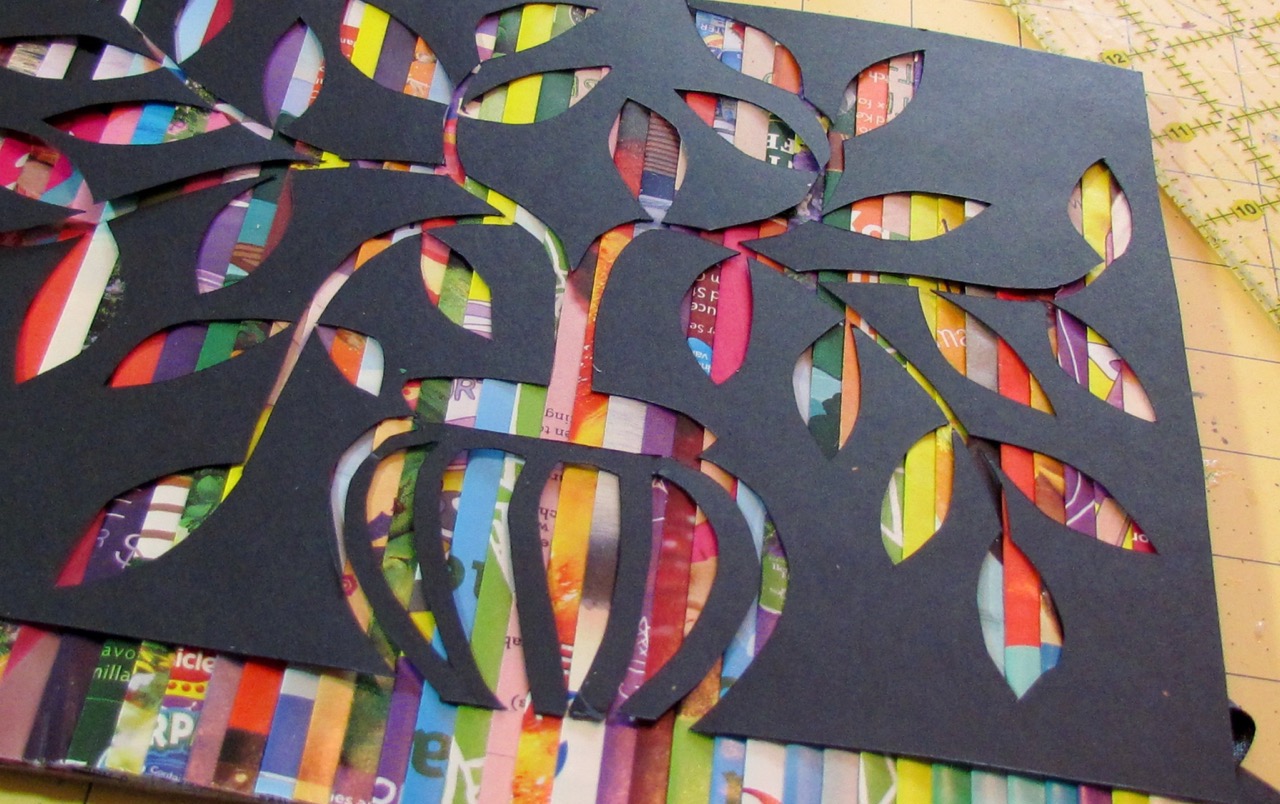
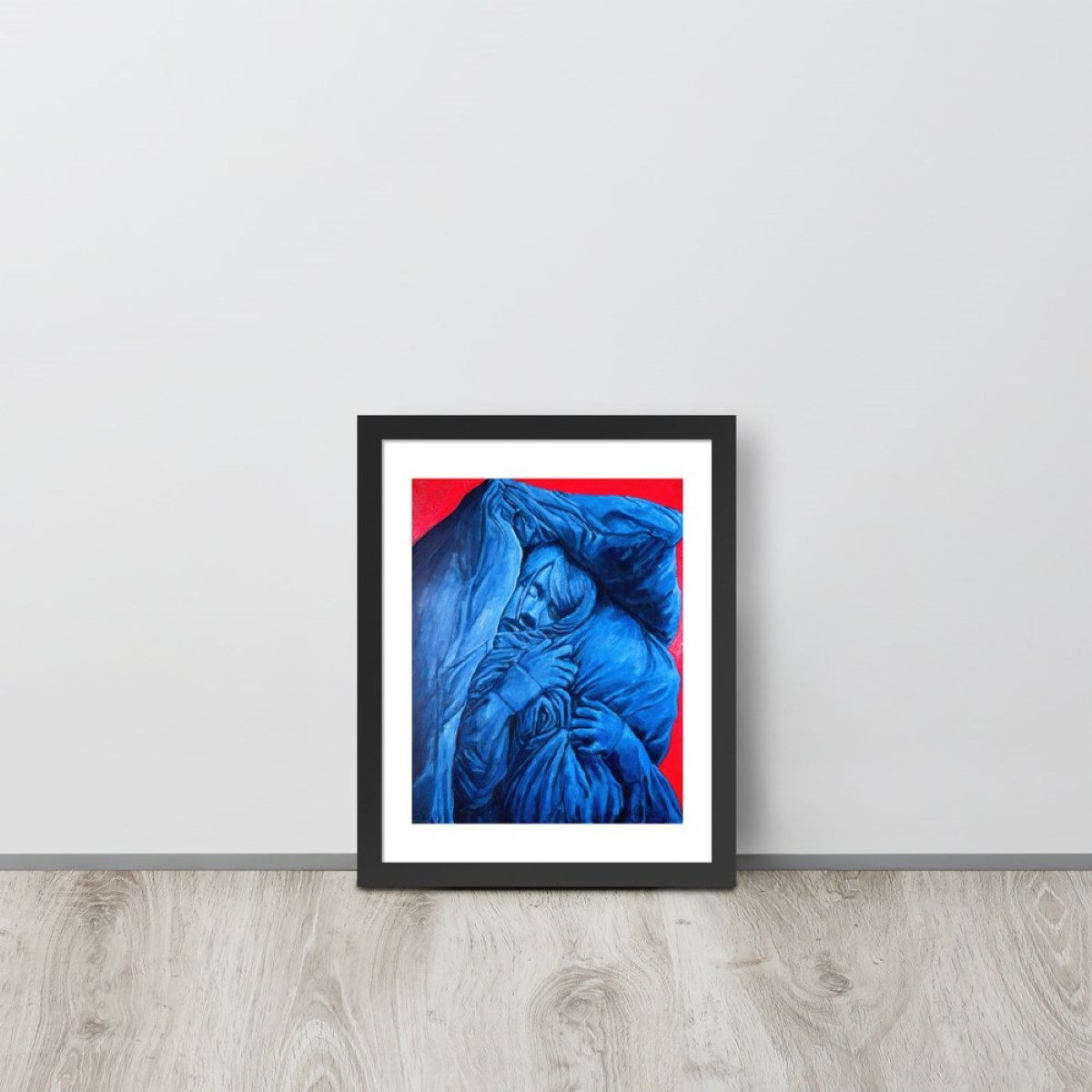
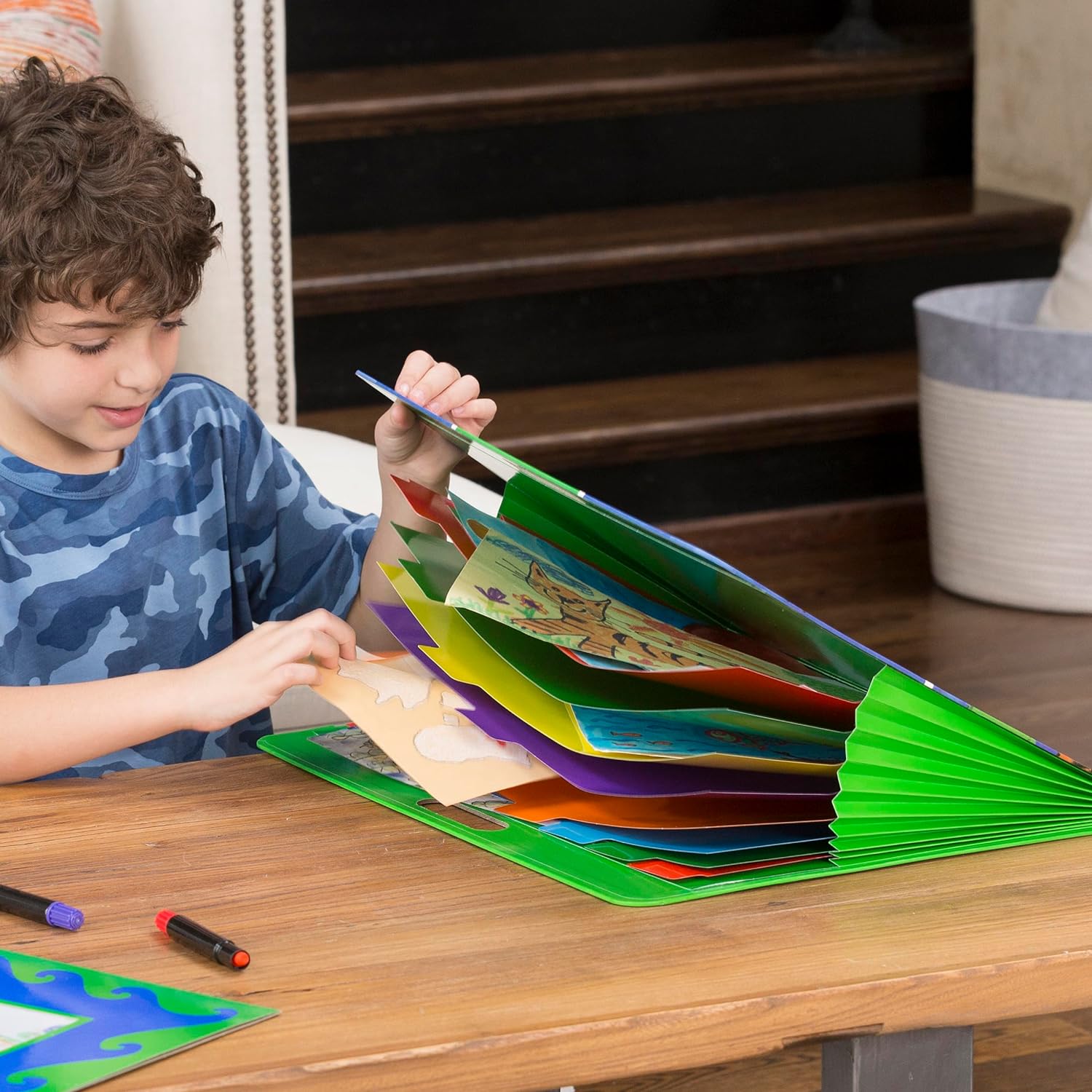
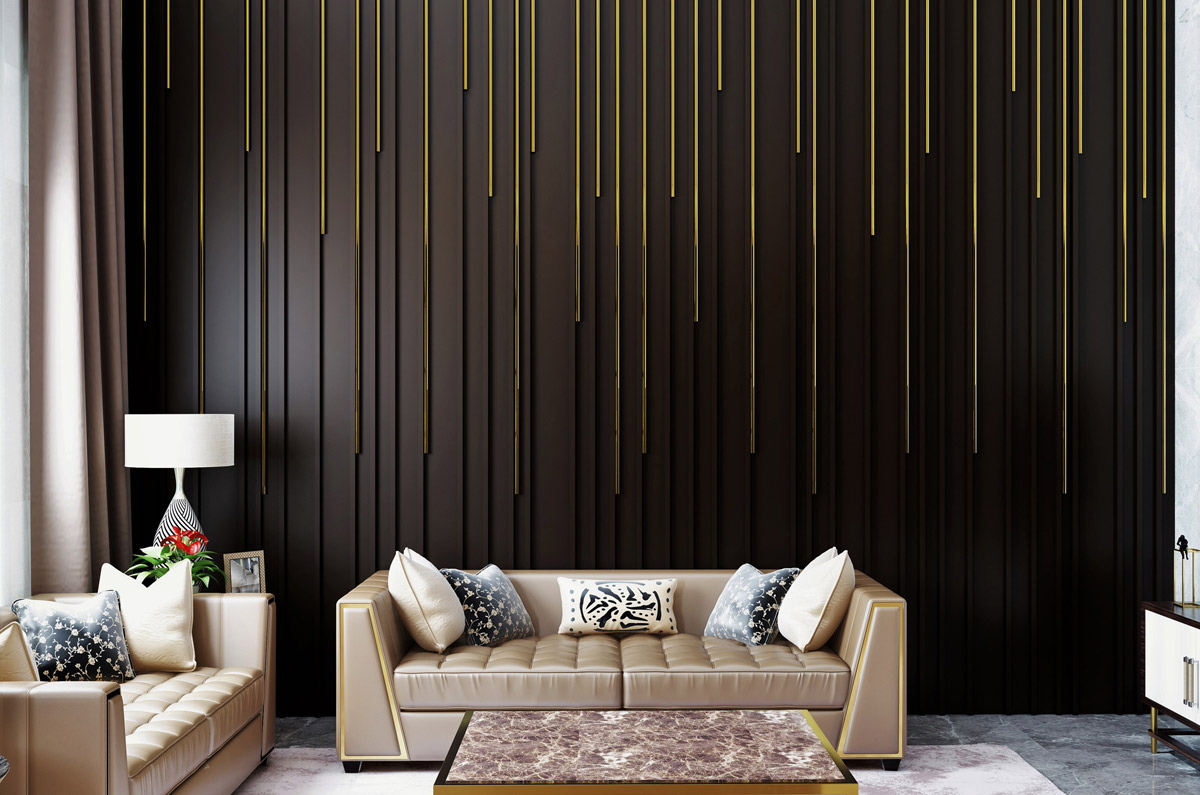
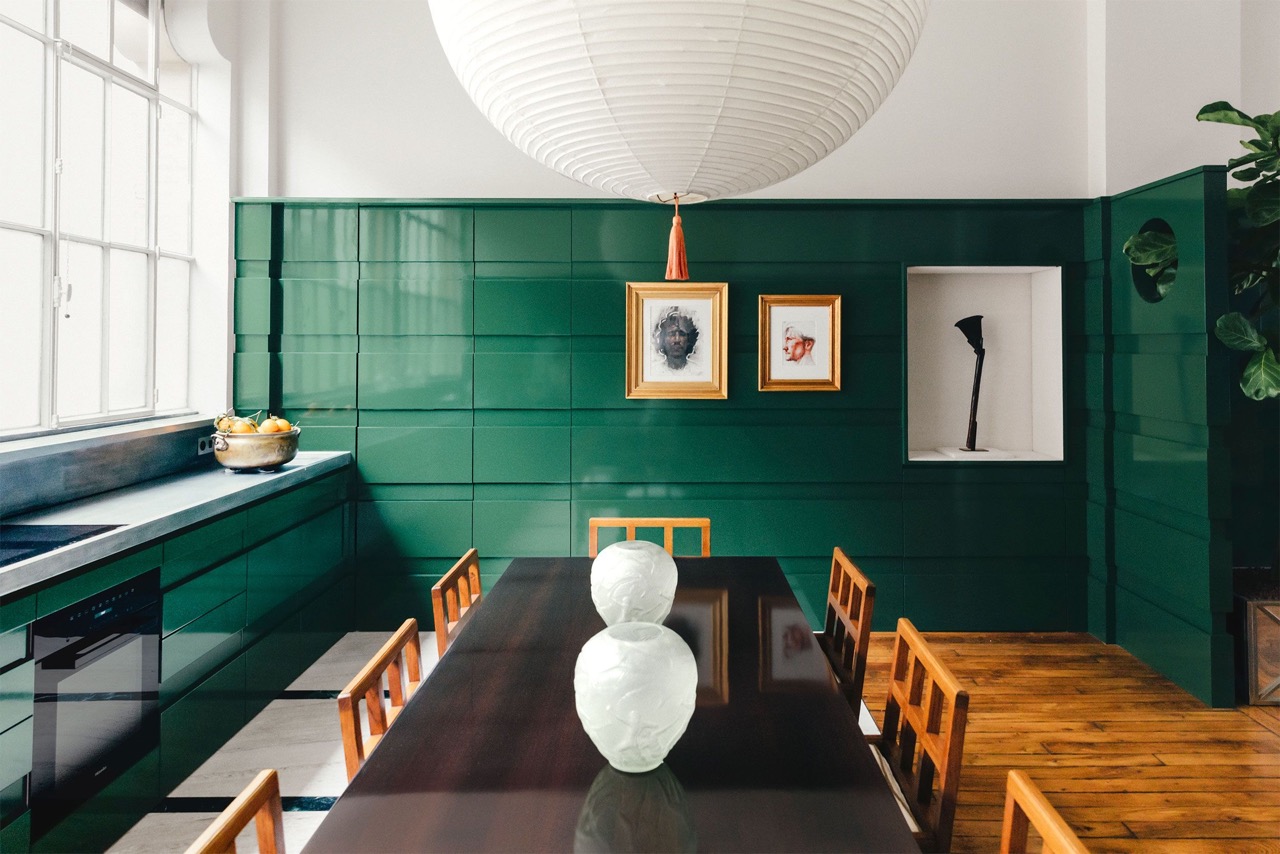
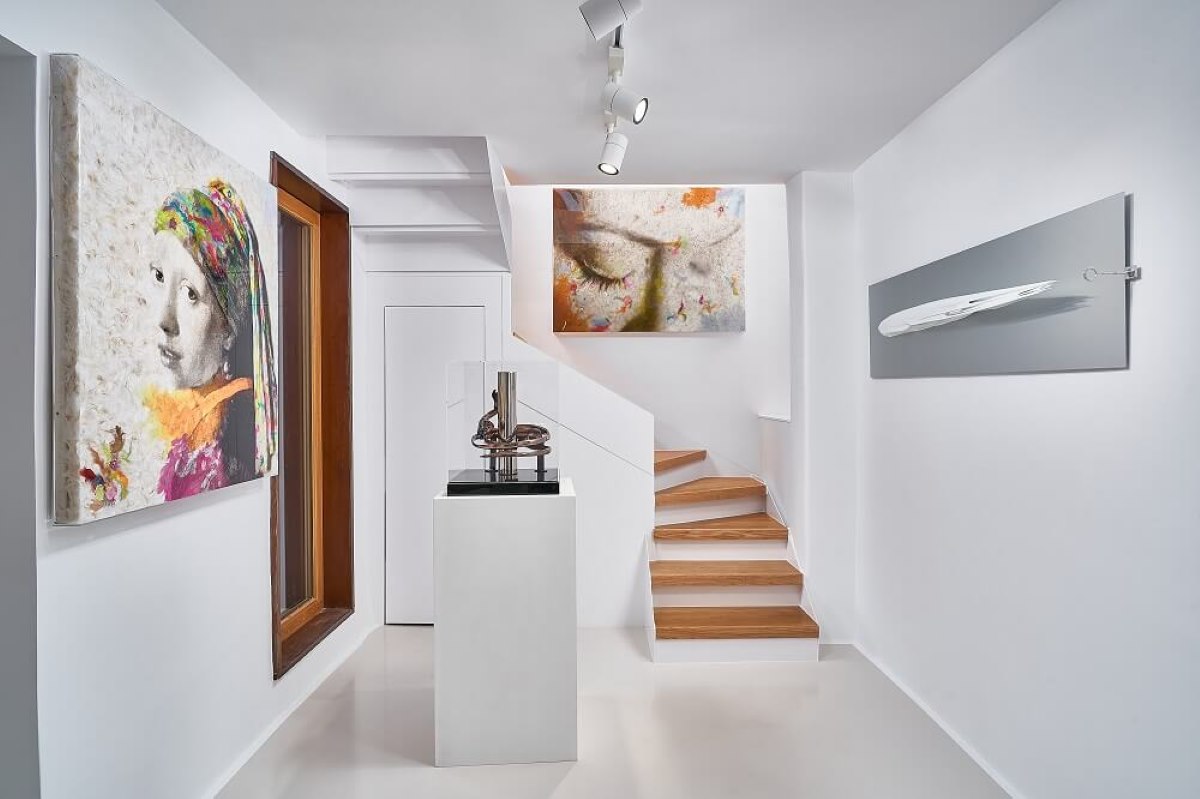
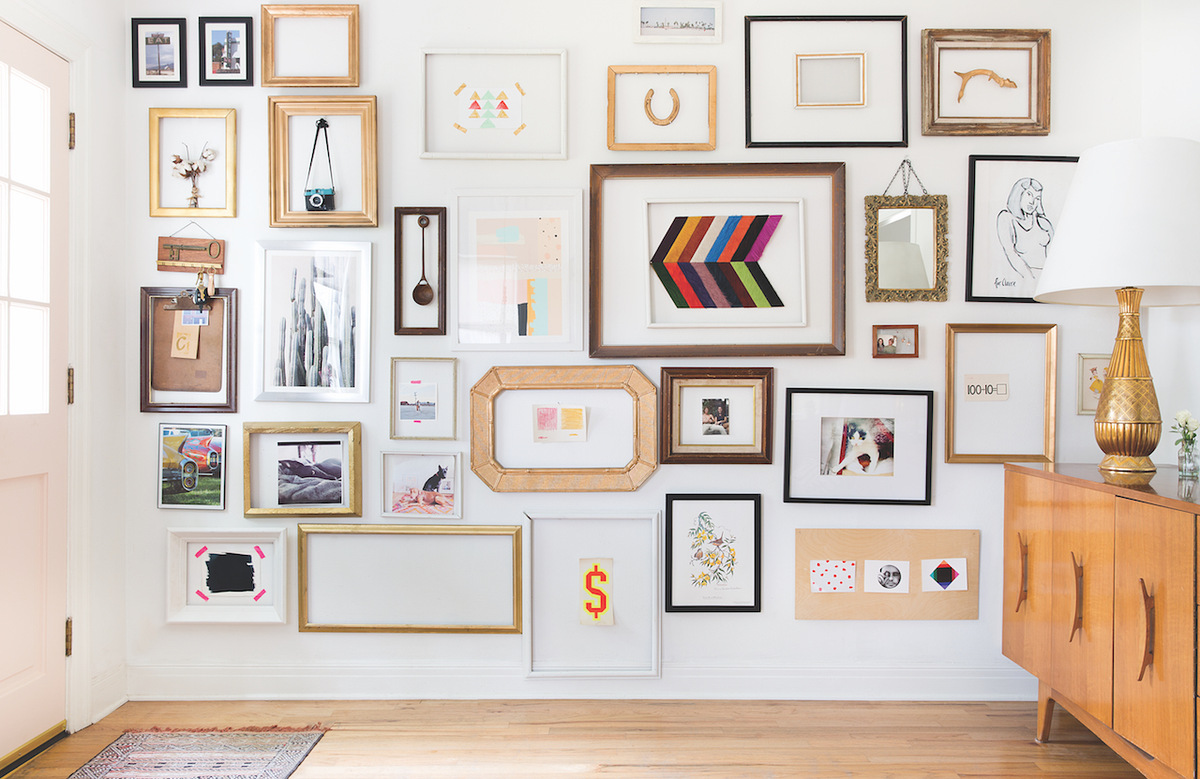
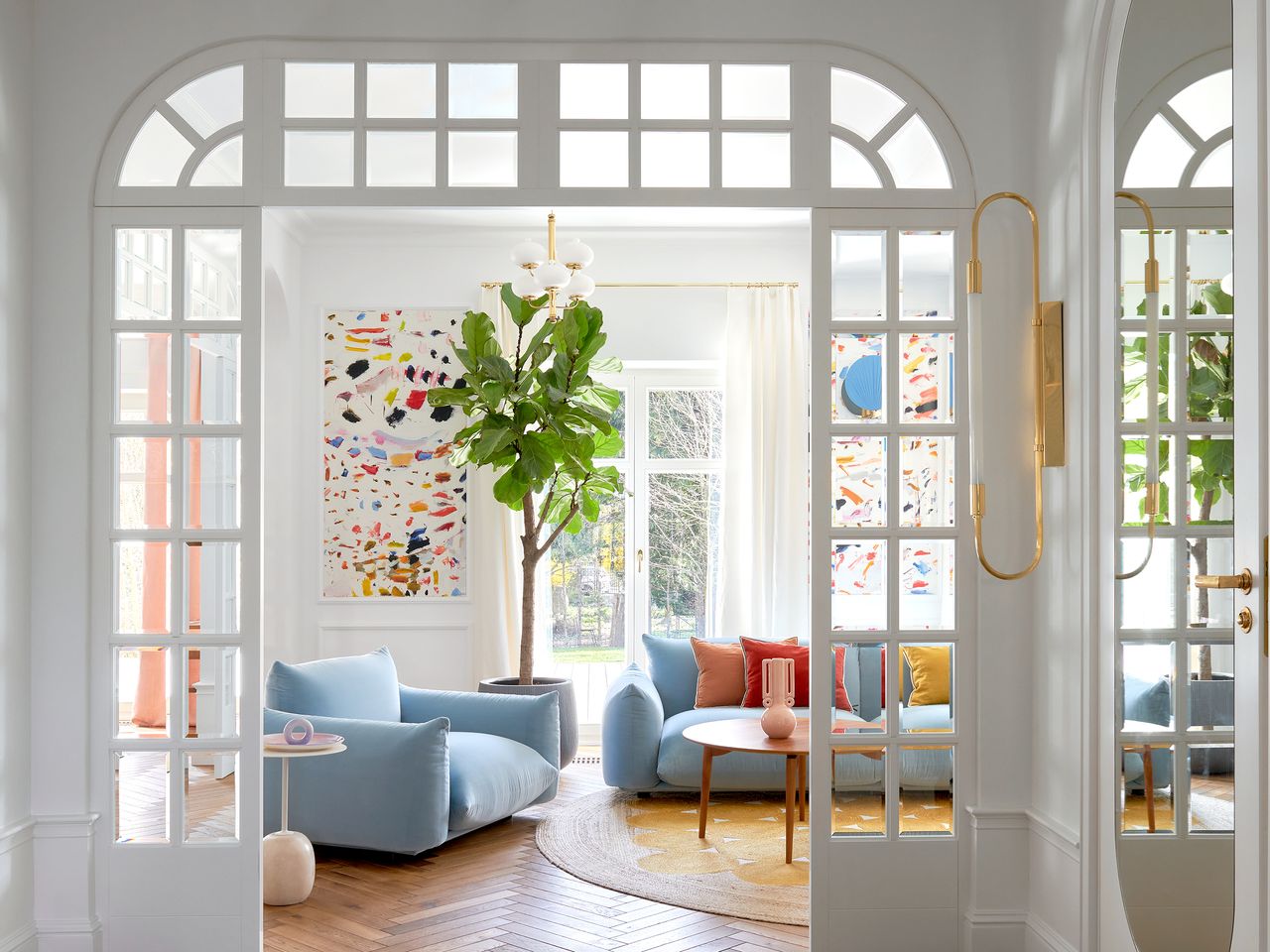
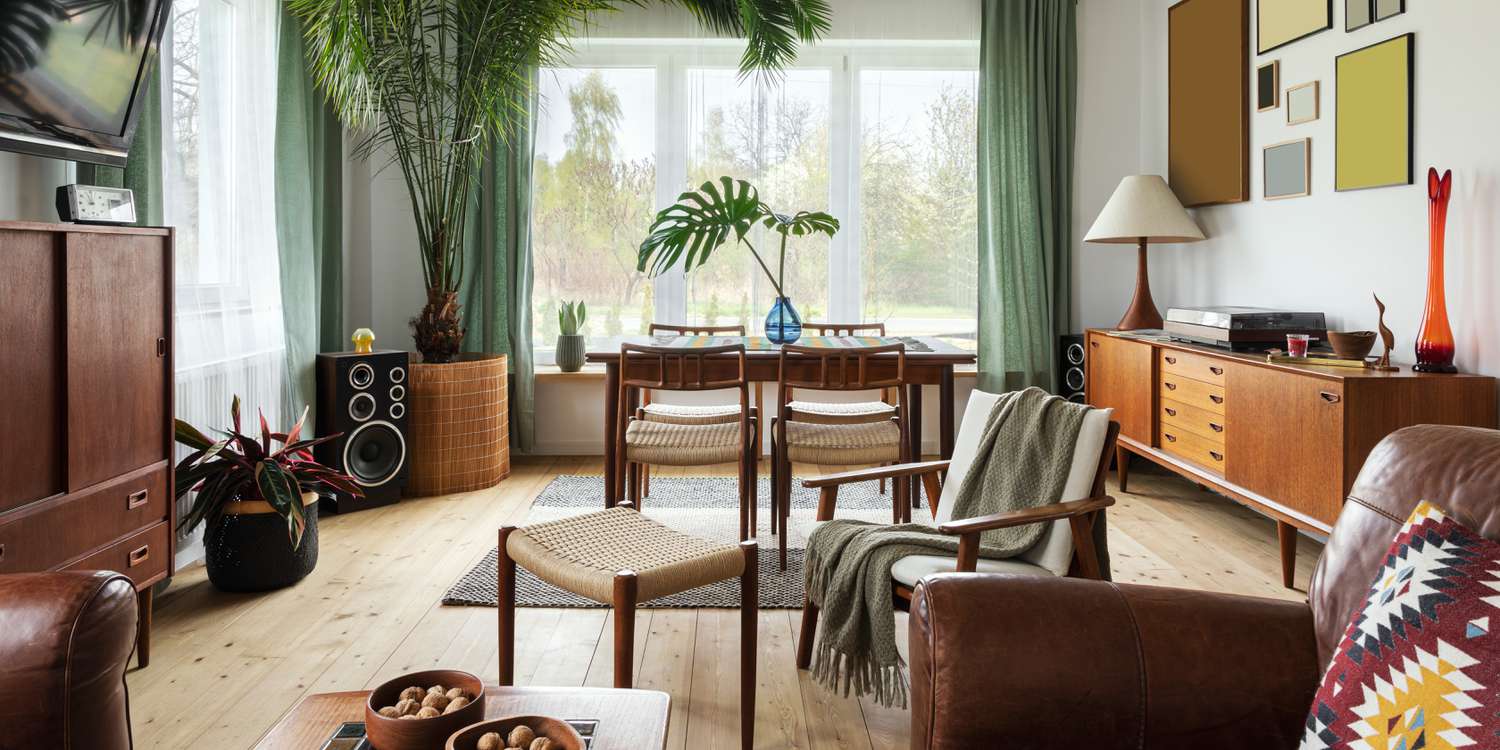
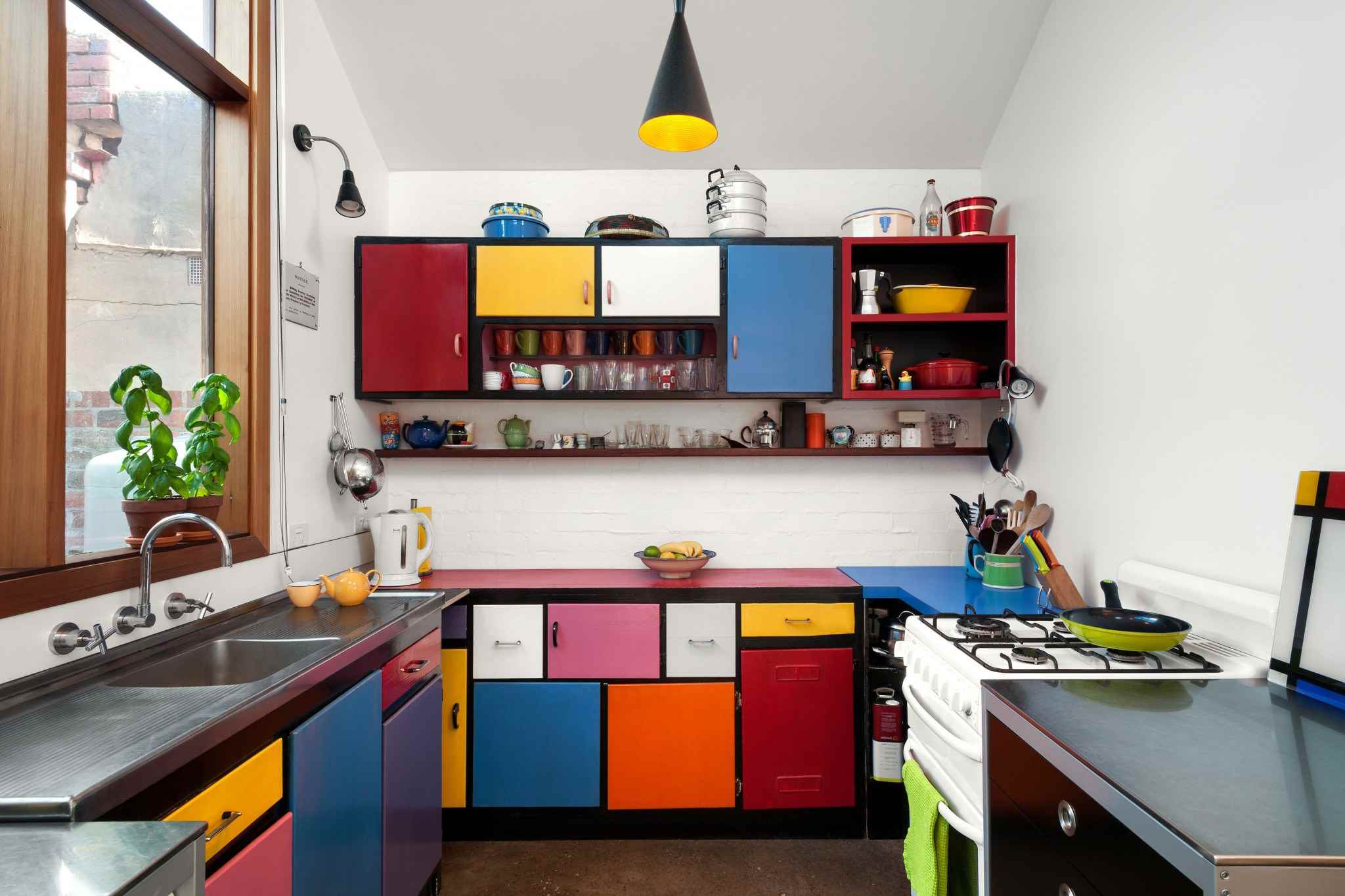
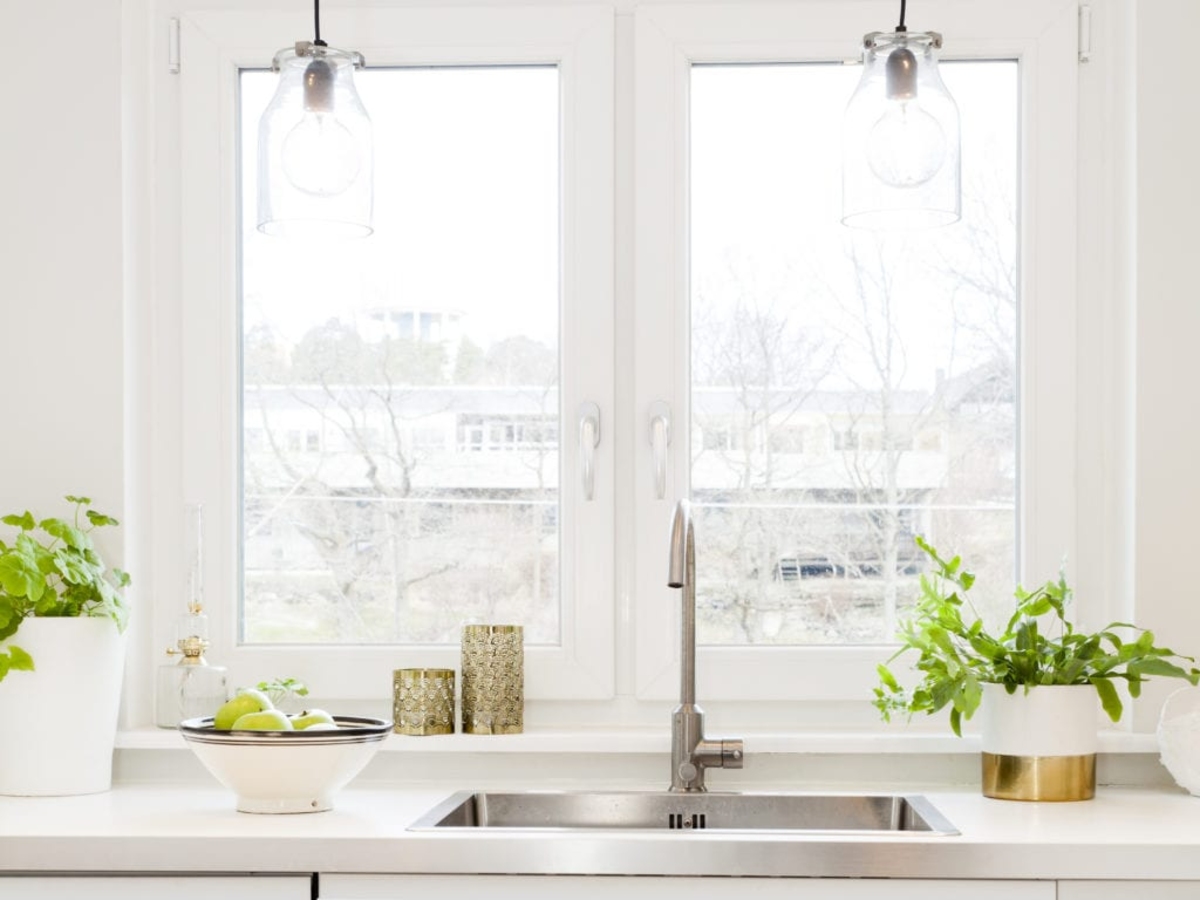
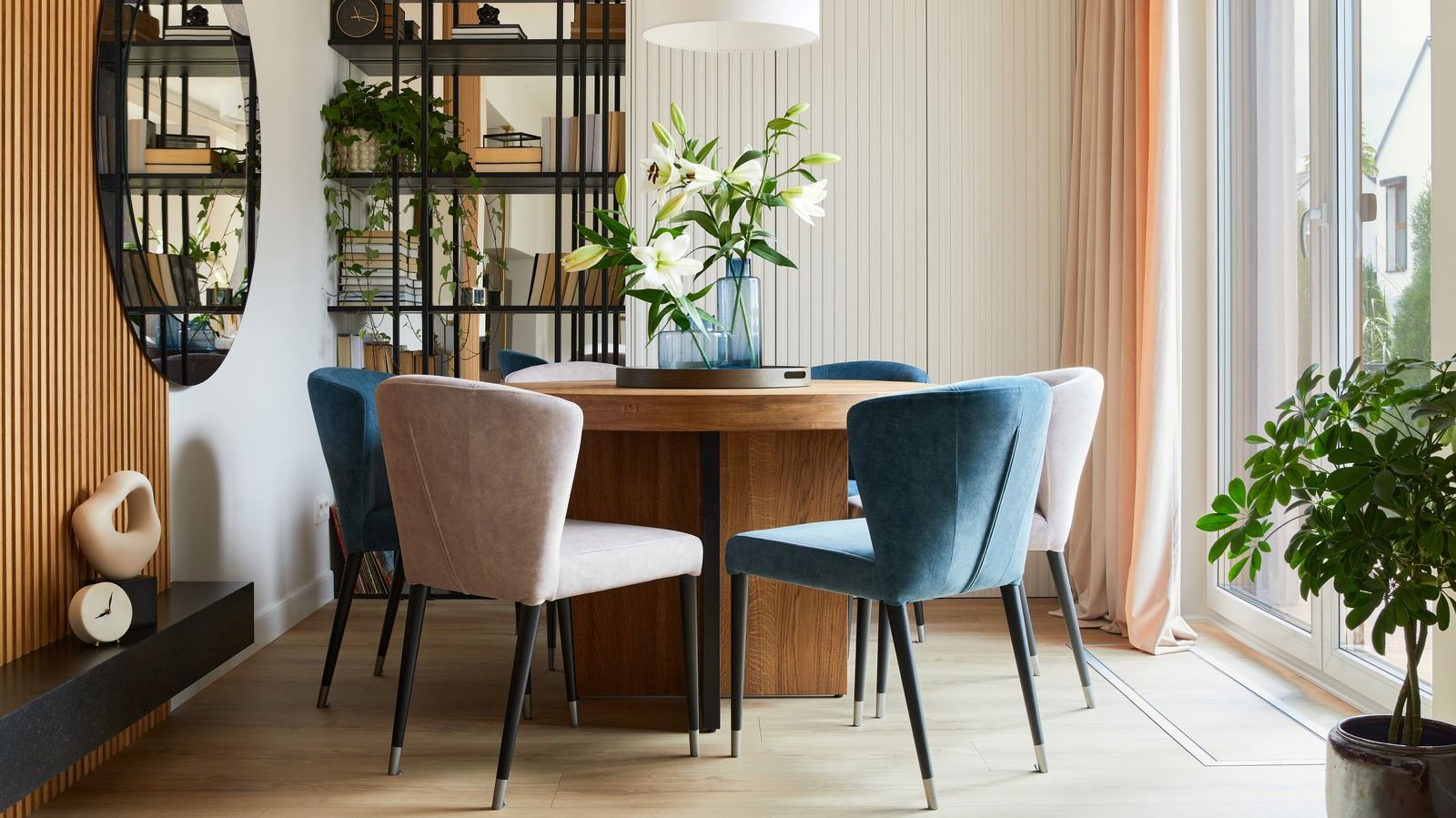

0 thoughts on “Decorating With Art: 13 Ways To Arrange Artwork”